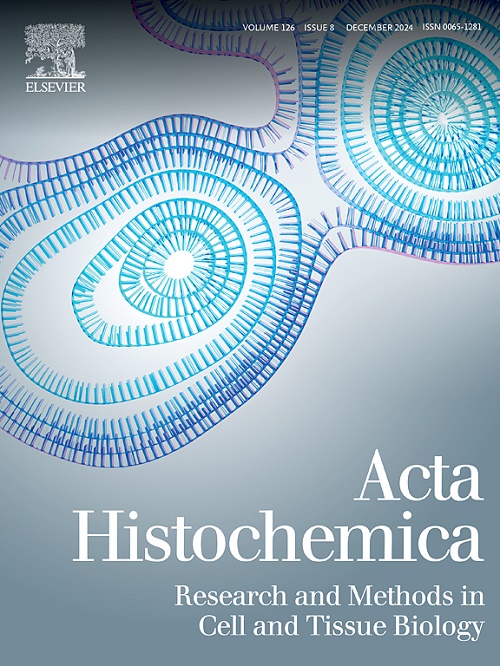fox01在骨骼肌萎缩中的作用:多方面的调控机制和治疗机会
IF 2.4
4区 生物学
Q4 CELL BIOLOGY
引用次数: 0
摘要
骨骼肌占人体总质量的近40% %,是运动、代谢和体温调节的主要效应器。骨骼肌萎缩是一种与衰老、疾病和残疾相关的常见疾病,严重影响患者的生活质量。本文就骨骼肌萎缩的发生与进展作一综述。叉头盒蛋白O1 (FoxO1)是通过多维分子网络介导病理机制的关键调控因子。它通过翻译后修饰(PTMs)、失调的自噬、不平衡的炎症微环境和卫星细胞功能的调节来影响骨骼肌代谢。针对fox01的治疗策略,如白藜芦醇诱导的SIRT1激活和miR-486模拟,在临床前模型中显示出有希望的结果。这篇综述强调了fox01在分子通路中的核心作用,提出了解决肌肉萎缩的潜在框架,并为肌肉减少症和相关疾病的治疗提供了新的见解。本文章由计算机程序翻译,如有差异,请以英文原文为准。
FoxO1 in skeletal muscle atrophy: Multifaceted regulatory mechanisms and therapeutic opportunities
Skeletal muscle, which accounts for nearly 40 % of total body mass, serves as the primary effector organ for locomotion, metabolism, and thermoregulation. Skeletal muscle atrophy, a common condition associated with aging, disease, and disability, significantly compromises patients’ quality of life. This review focuses on the occurrence and progression of skeletal muscle atrophy. Forkhead box protein O1 (FoxO1) is a key regulatory factor that mediates pathological mechanisms through multidimensional molecular networks. It influences skeletal muscle metabolism via post-translational modifications (PTMs), dysregulated autophagy, an imbalanced inflammatory microenvironment, and the regulation of satellite cell function. Therapeutic strategies targeting FoxO1, such as resveratrol-induced SIRT1 activation and miR-486 mimics, have shown promising results in preclinical models. This review highlights the central role of FoxO1 in molecular pathways, proposes a potential framework for addressing muscle atrophy, and offers new insights into the treatment of sarcopenia and related diseases.
求助全文
通过发布文献求助,成功后即可免费获取论文全文。
去求助
来源期刊

Acta histochemica
生物-细胞生物学
CiteScore
4.60
自引率
4.00%
发文量
107
审稿时长
23 days
期刊介绍:
Acta histochemica, a journal of structural biochemistry of cells and tissues, publishes original research articles, short communications, reviews, letters to the editor, meeting reports and abstracts of meetings. The aim of the journal is to provide a forum for the cytochemical and histochemical research community in the life sciences, including cell biology, biotechnology, neurobiology, immunobiology, pathology, pharmacology, botany, zoology and environmental and toxicological research. The journal focuses on new developments in cytochemistry and histochemistry and their applications. Manuscripts reporting on studies of living cells and tissues are particularly welcome. Understanding the complexity of cells and tissues, i.e. their biocomplexity and biodiversity, is a major goal of the journal and reports on this topic are especially encouraged. Original research articles, short communications and reviews that report on new developments in cytochemistry and histochemistry are welcomed, especially when molecular biology is combined with the use of advanced microscopical techniques including image analysis and cytometry. Letters to the editor should comment or interpret previously published articles in the journal to trigger scientific discussions. Meeting reports are considered to be very important publications in the journal because they are excellent opportunities to present state-of-the-art overviews of fields in research where the developments are fast and hard to follow. Authors of meeting reports should consult the editors before writing a report. The editorial policy of the editors and the editorial board is rapid publication. Once a manuscript is received by one of the editors, an editorial decision about acceptance, revision or rejection will be taken within a month. It is the aim of the publishers to have a manuscript published within three months after the manuscript has been accepted
 求助内容:
求助内容: 应助结果提醒方式:
应助结果提醒方式:


